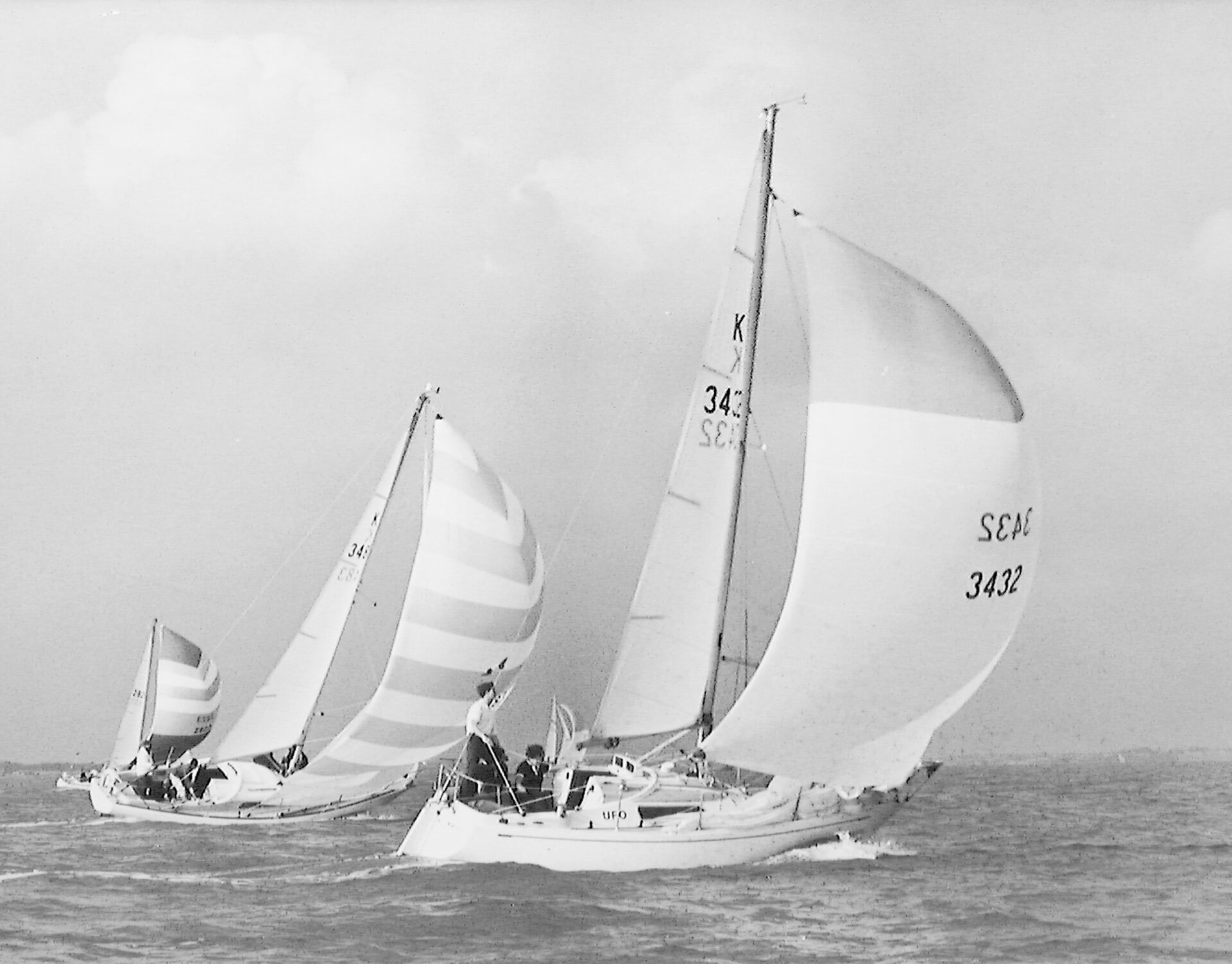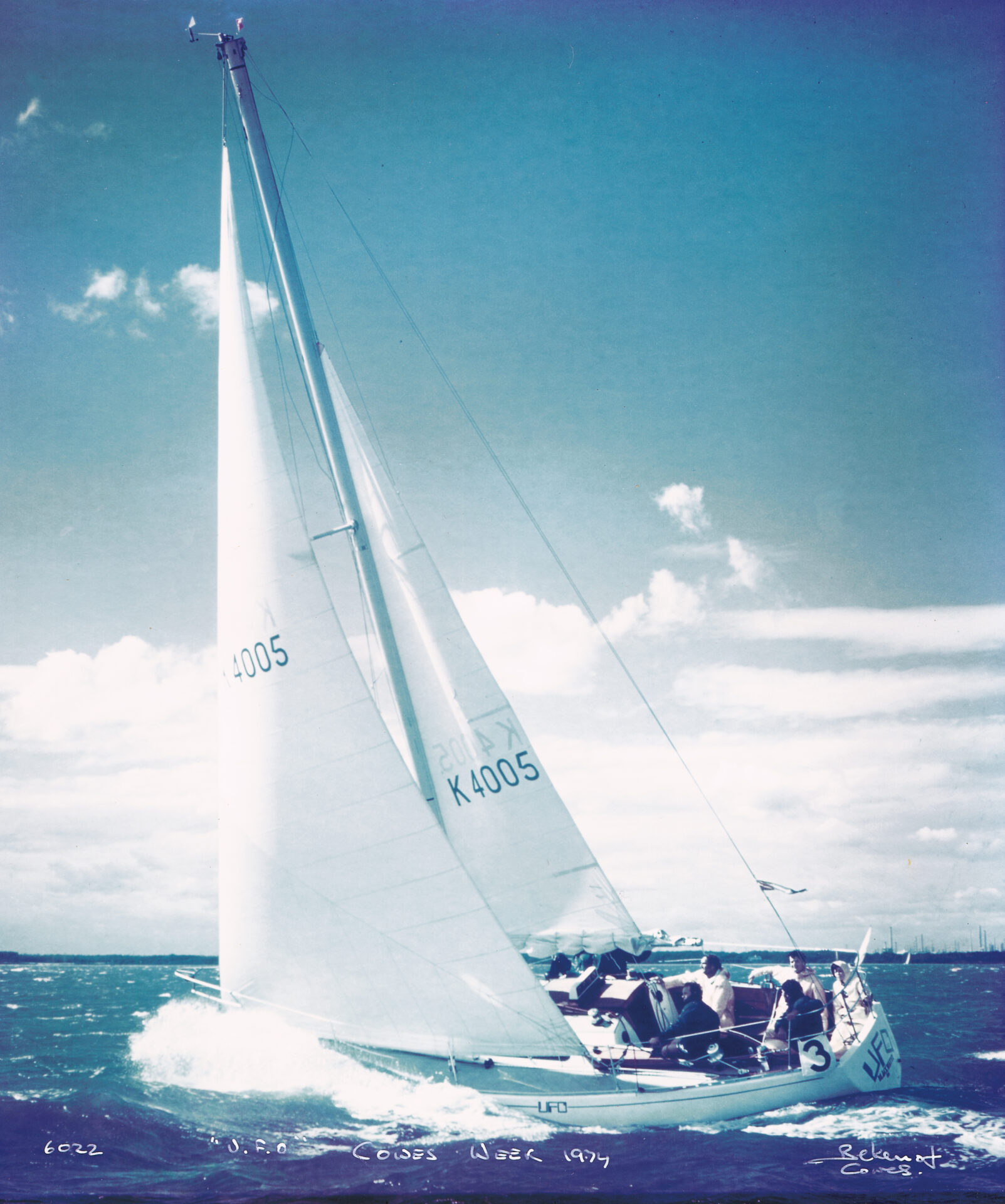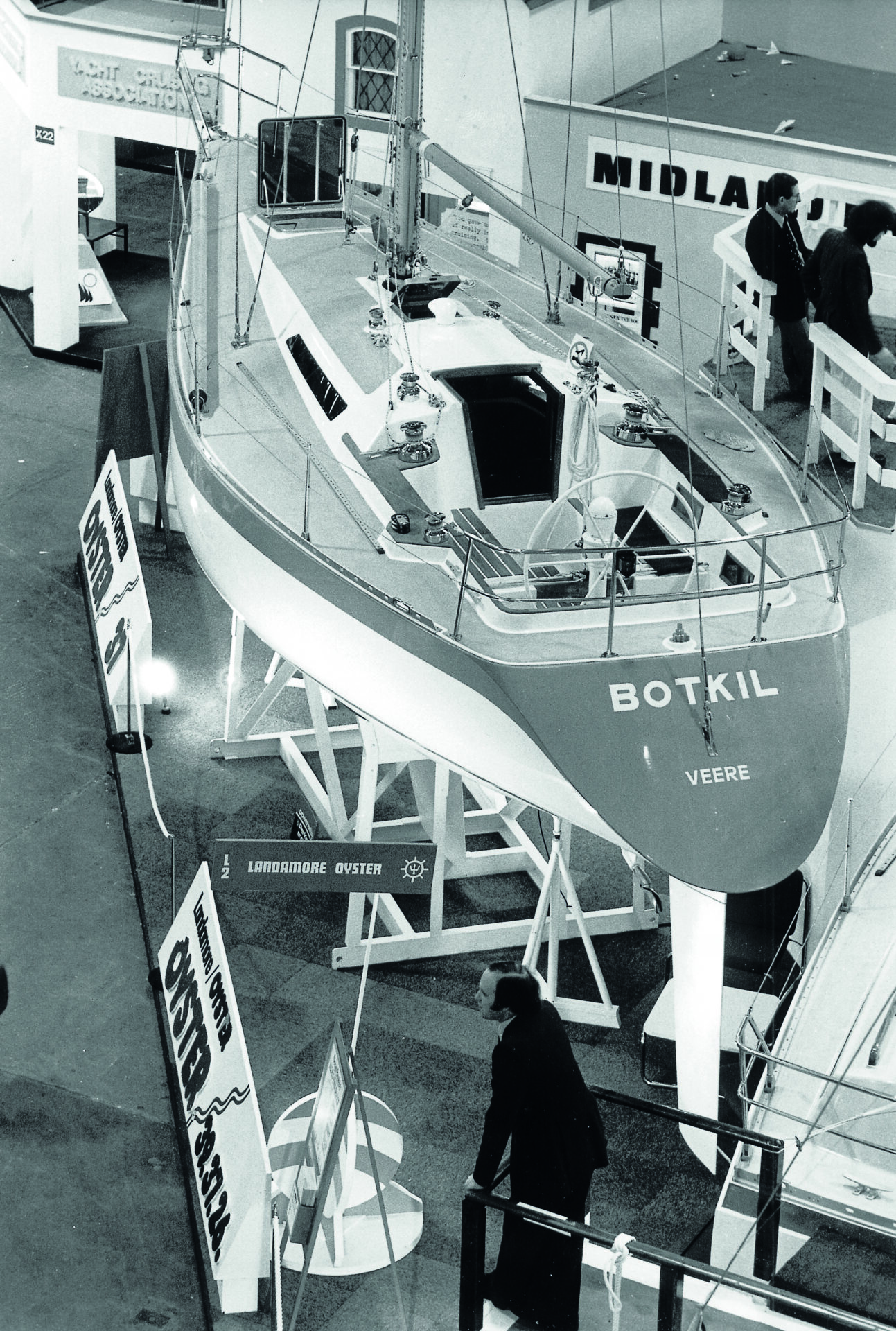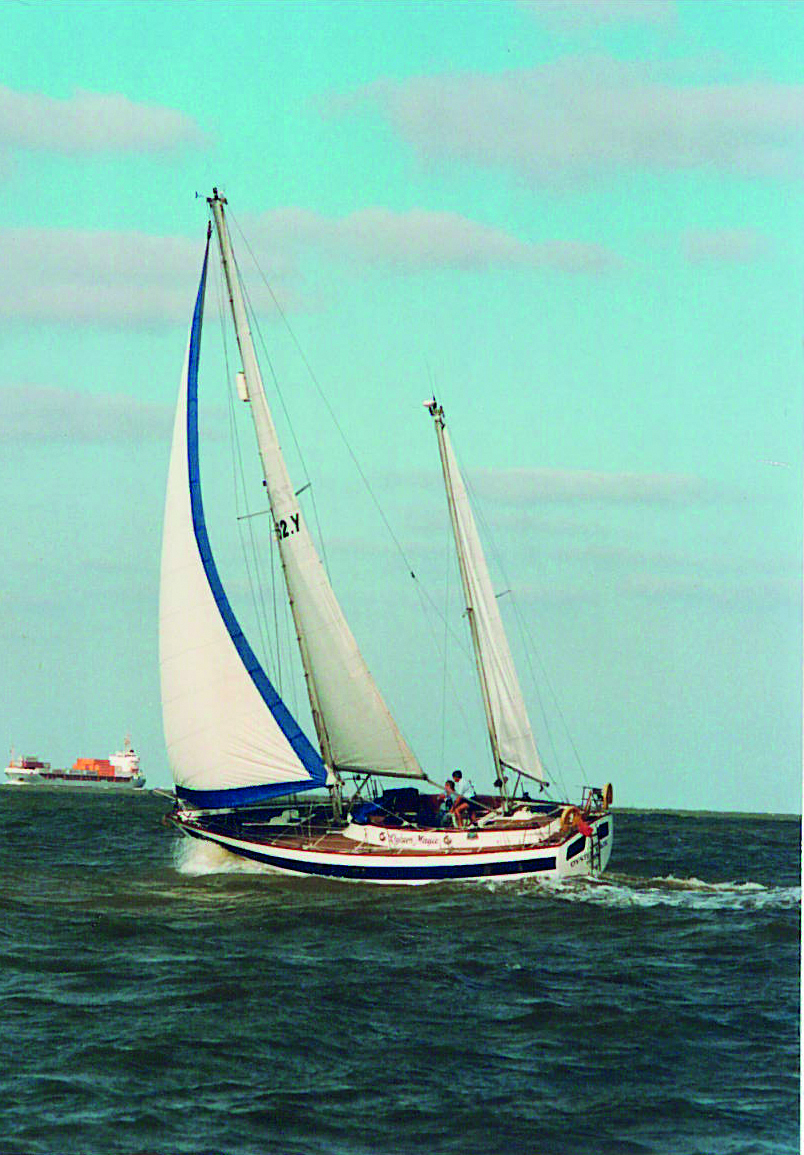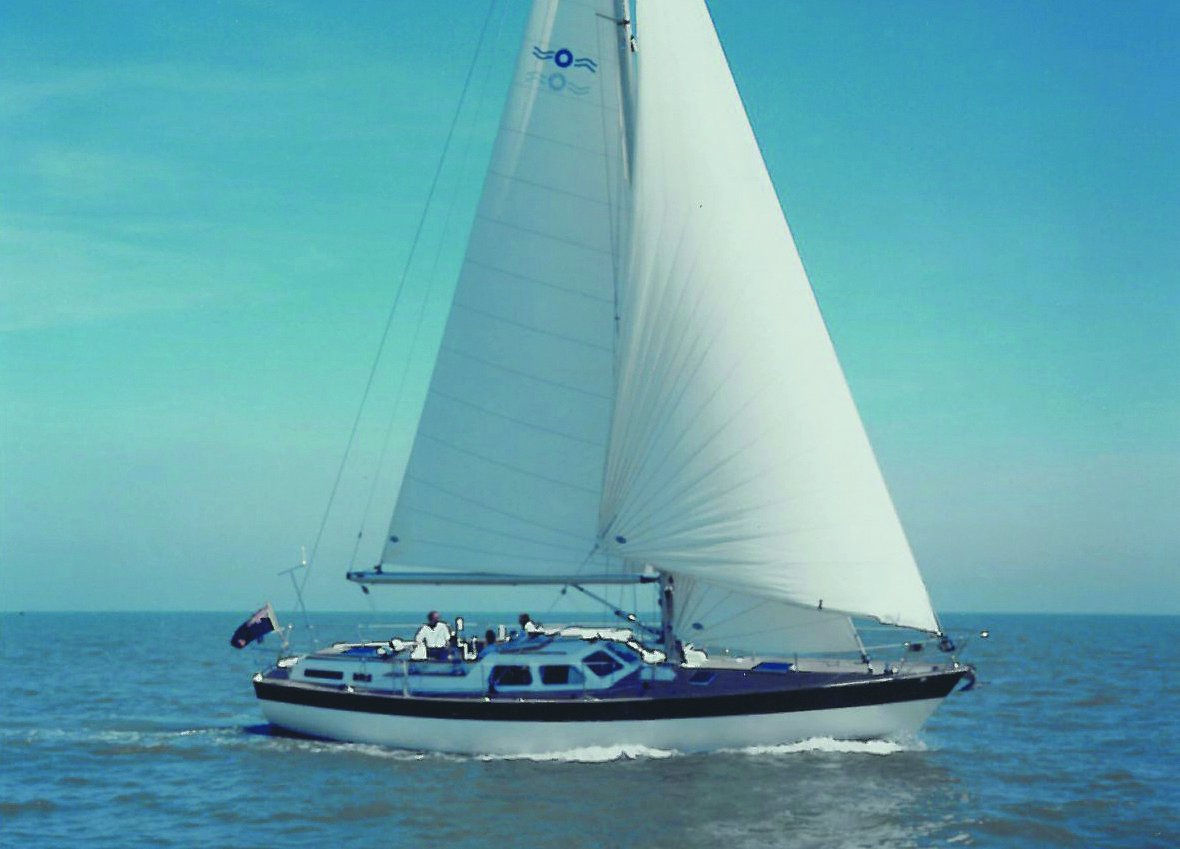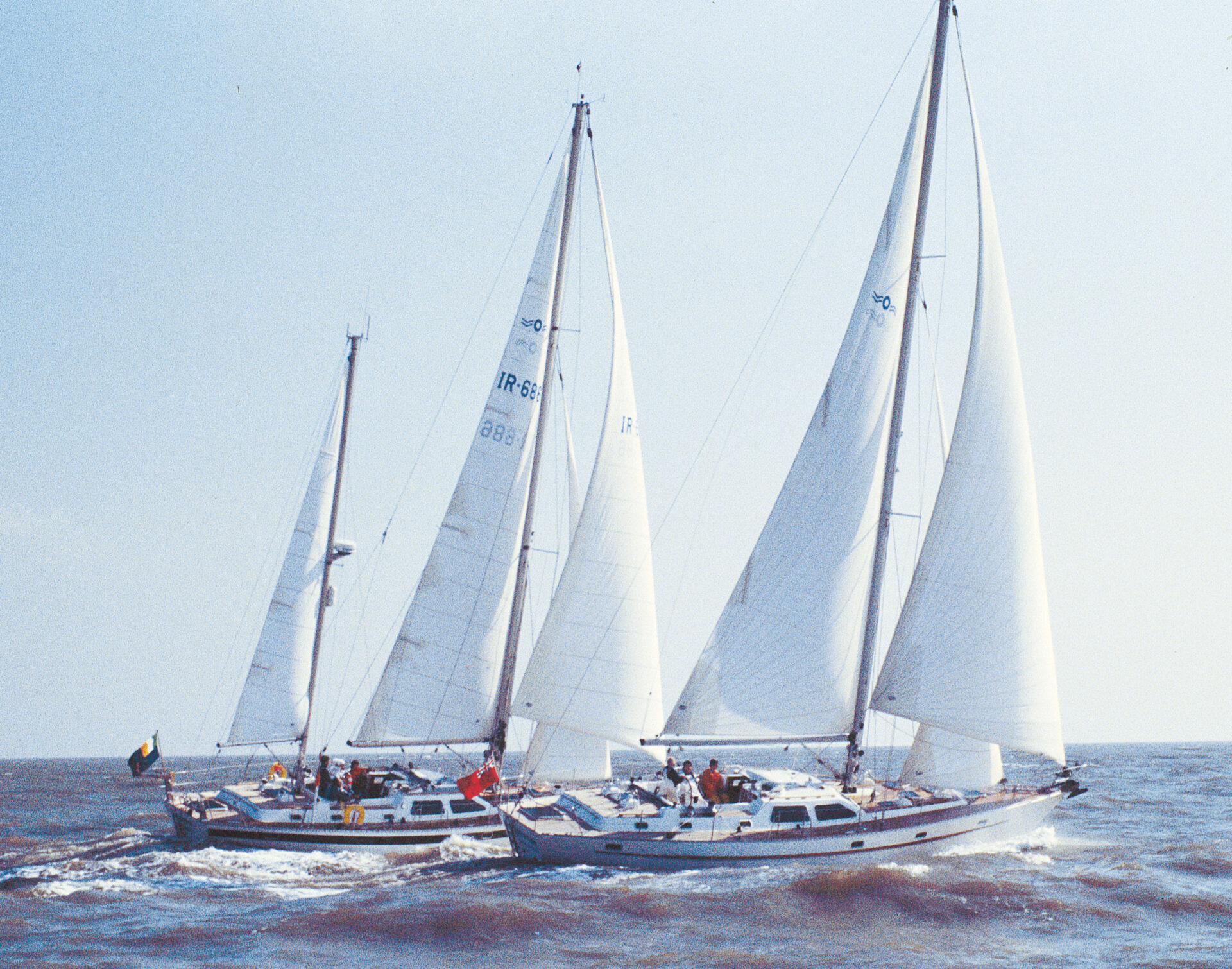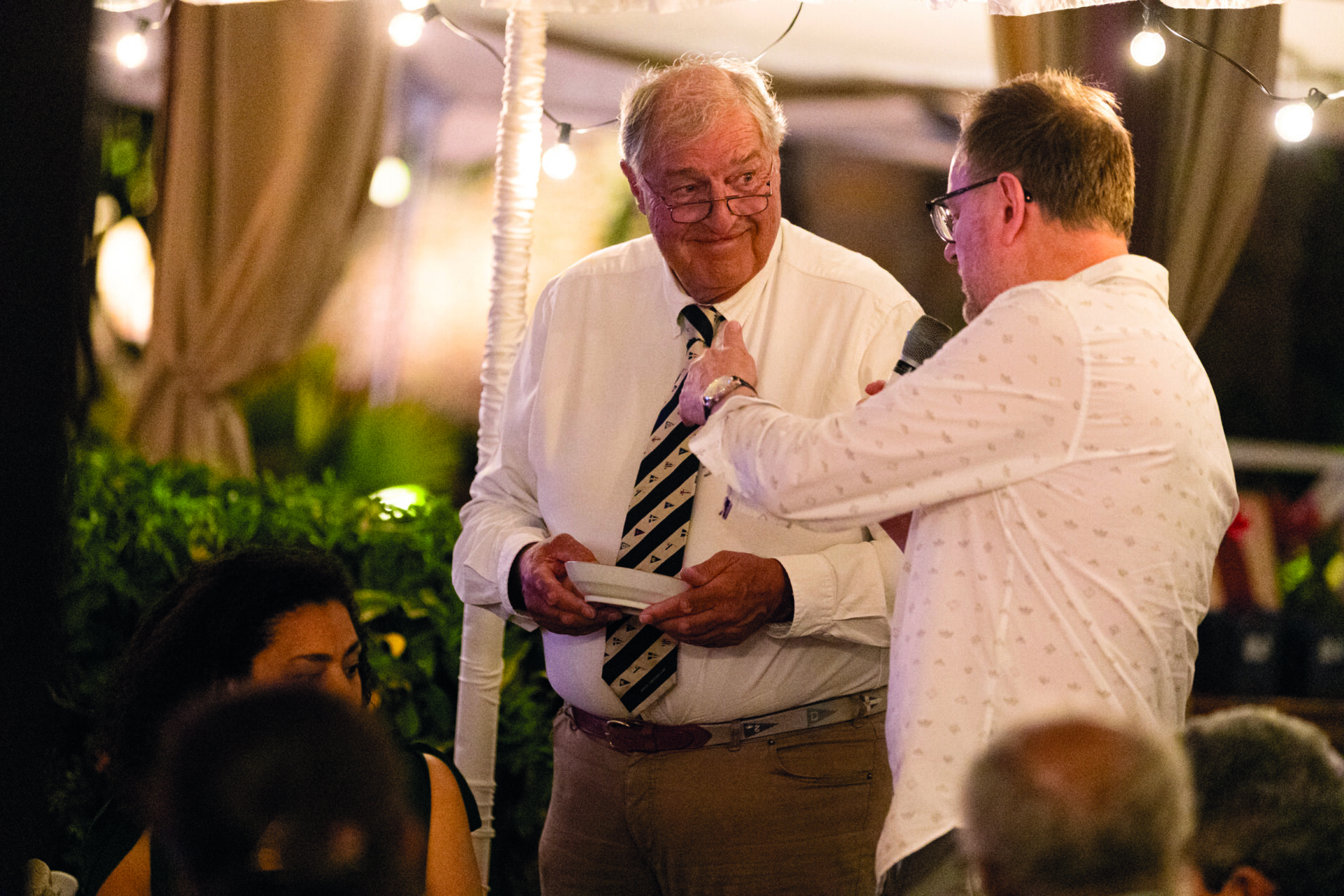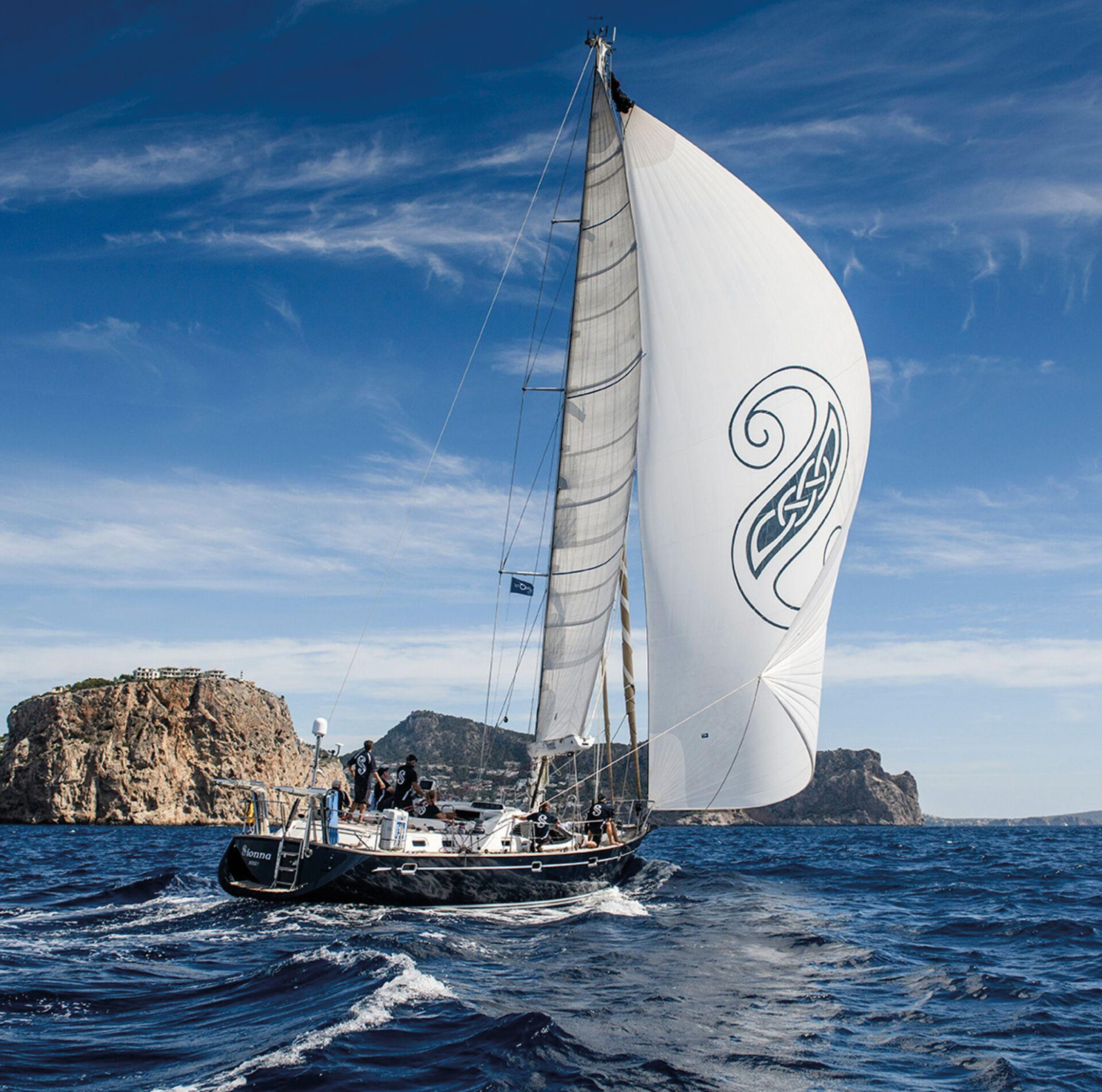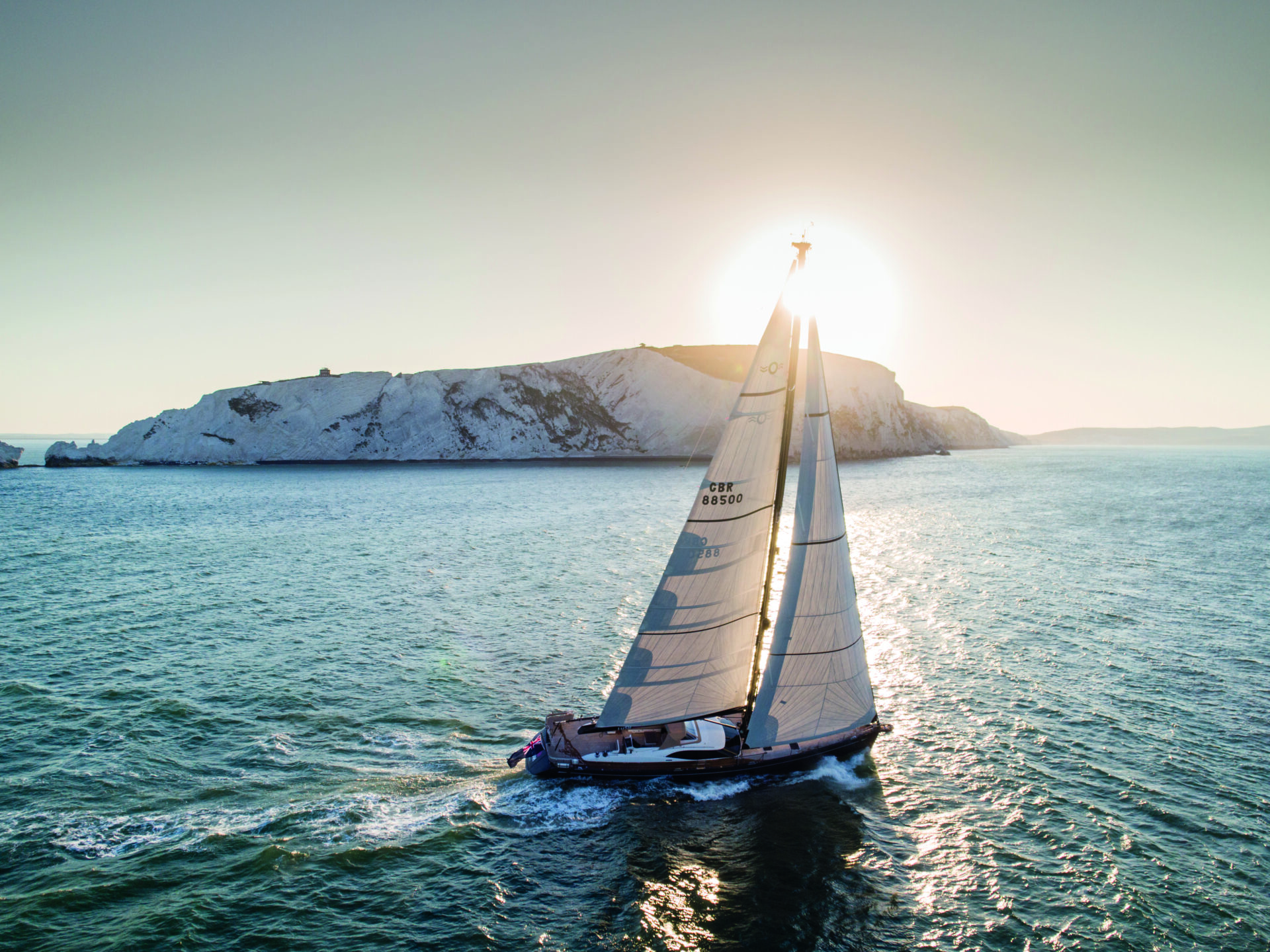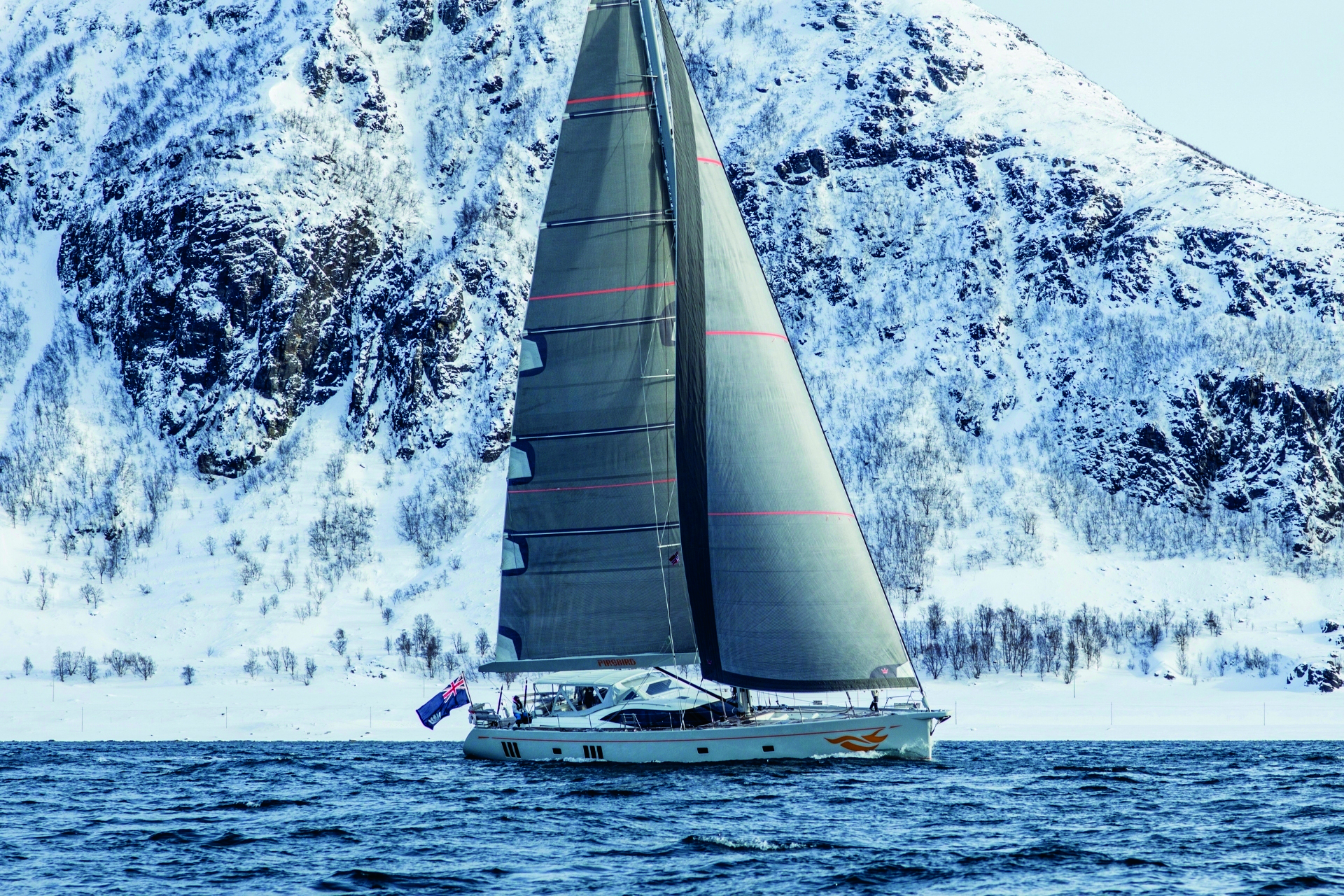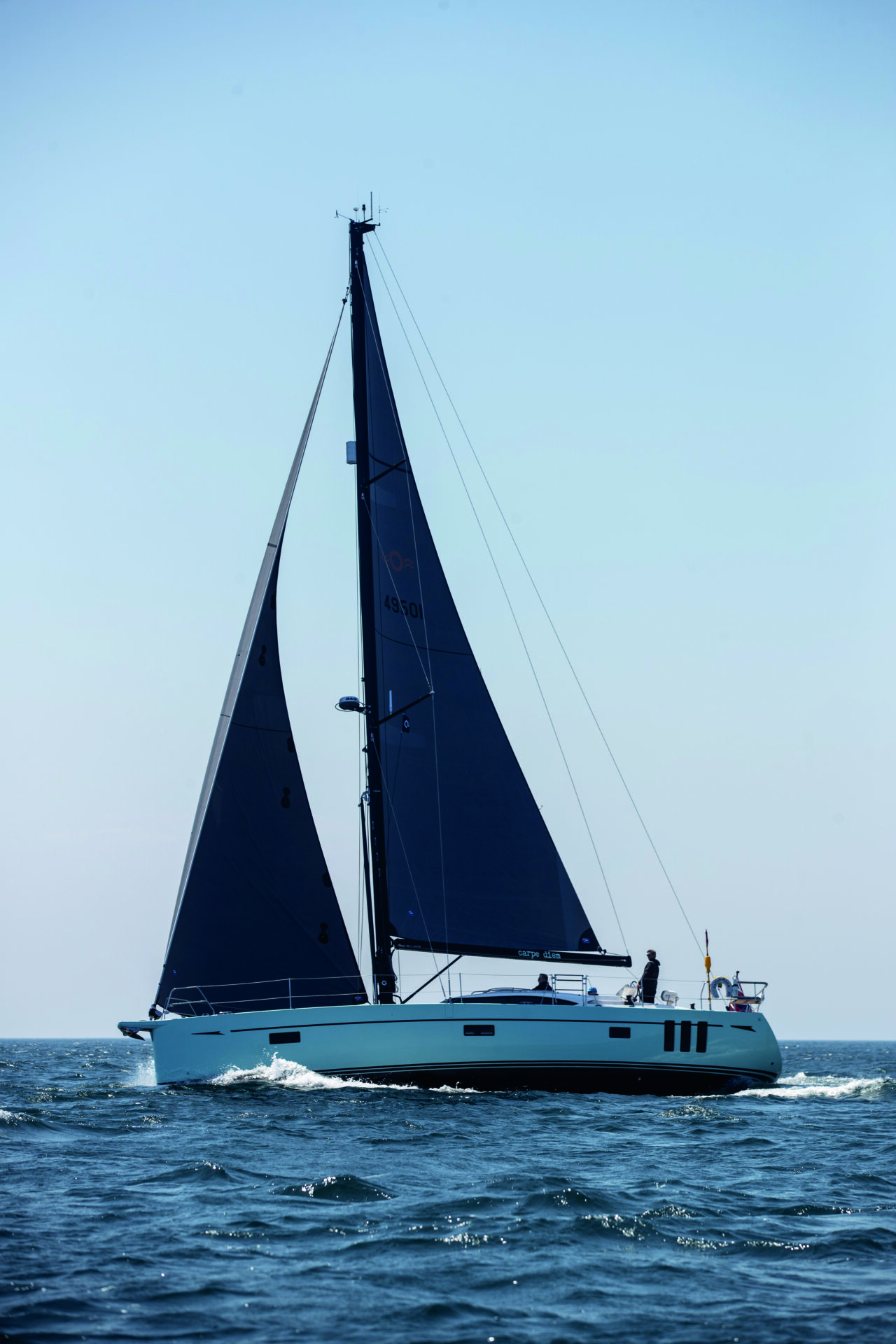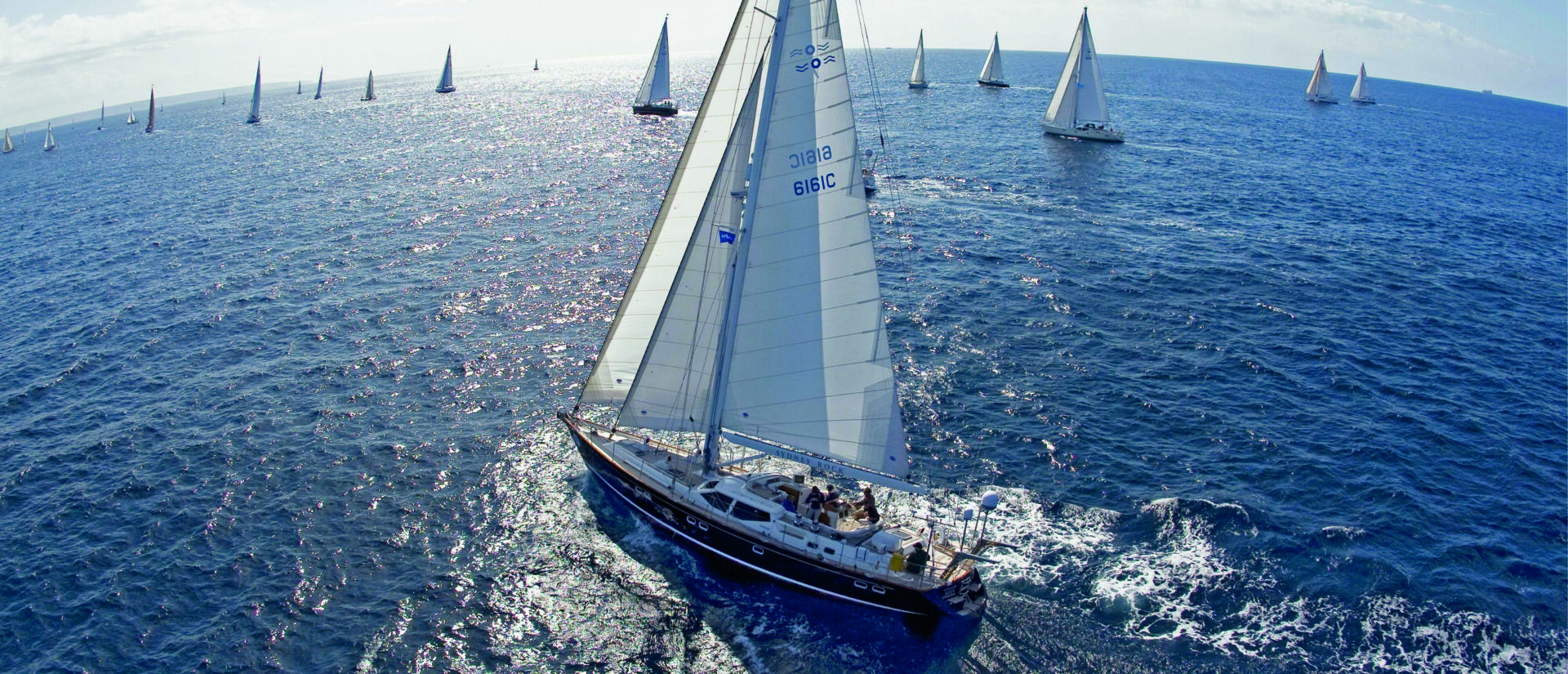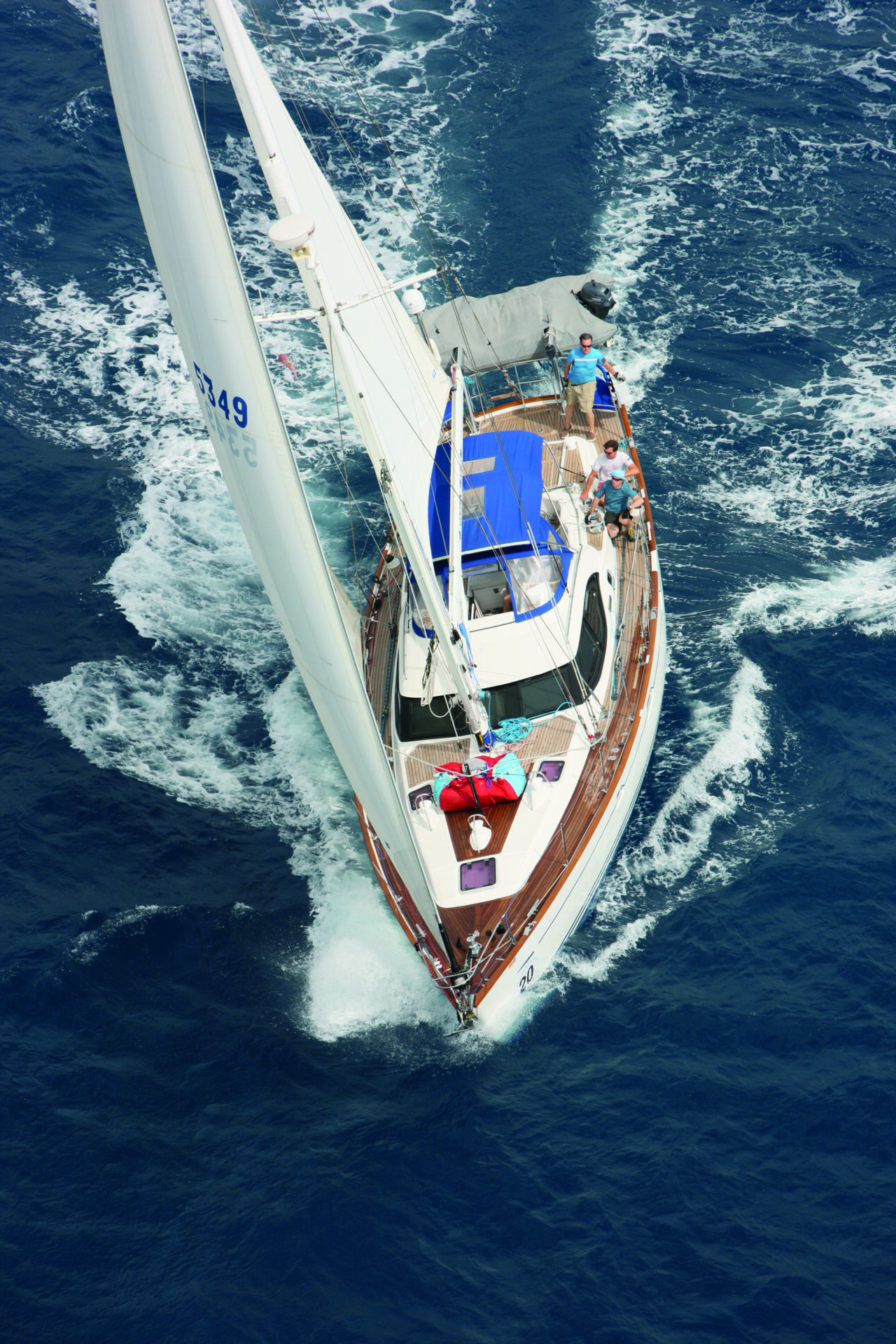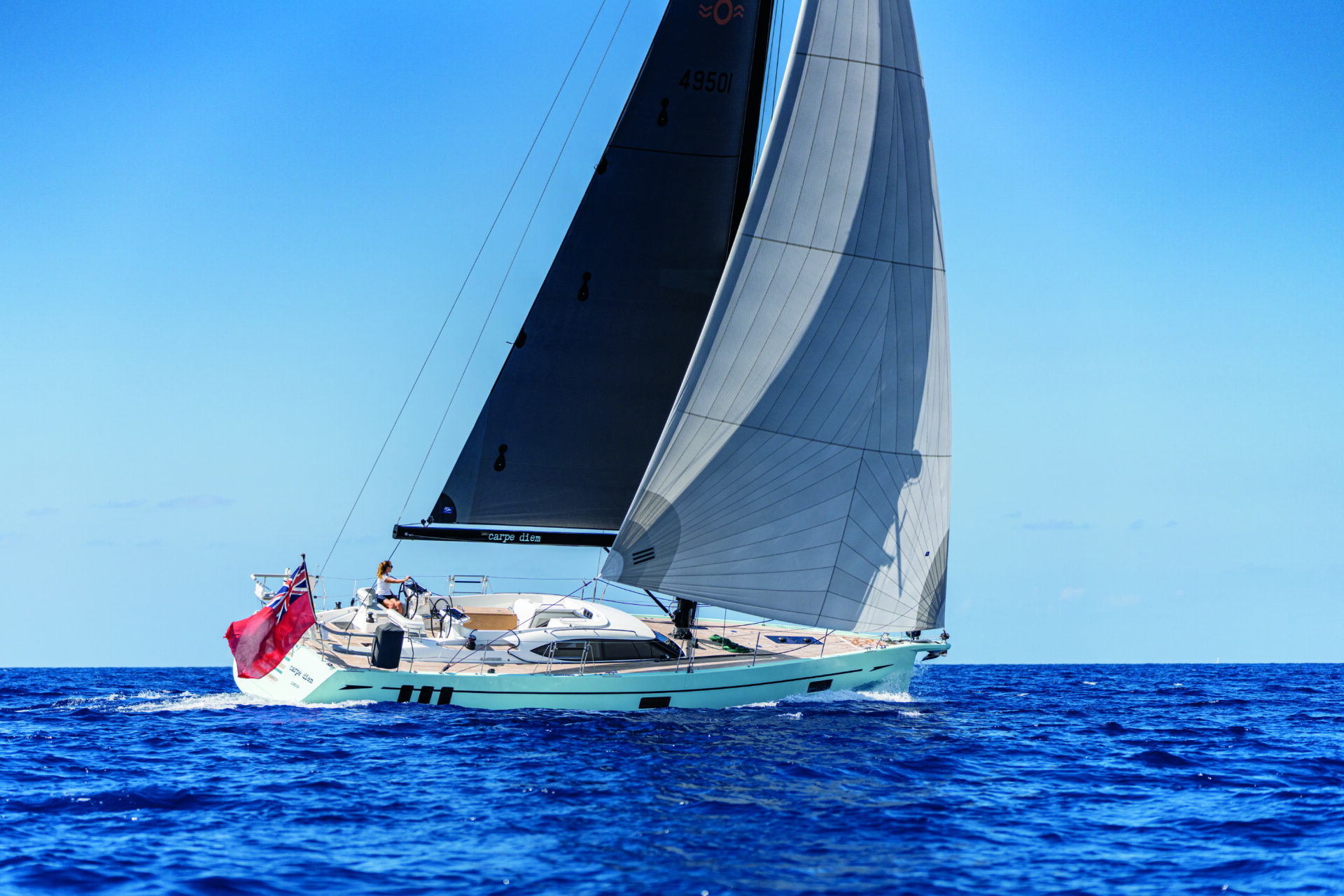Spirit of adventure
Brit builder Oyster Yachts is famous for its go-anywhere, luxury bluewater cruisers. As it celebrates its 50th anniversary in 2023, Charlotte Thomas delves into the archives to uncover the brand’s extraordinary – and sometimes surprising – history.
14 November 2023
Advertisement
Sailing the first hull of the Oyster 495 in July 2022 was something of a poignant moment. Our 1,750-mile odyssey delivering the yacht from the UK to Barcelona in Spain was the perfect way to get to know the new baby of the famous British cruising marque. (See Ocean #105 for our full review from that voyage.)
Still, it also marked something of a changing of the guard – the 495 is the first Oyster to have been entirely conceived and designed under the ownership of Richard Hadida, who bought the company in 2018.
His passion, like that of so many other Oyster owners’ passions, had arisen from his experiences on board his own Oyster, an 885 called Lush, and it was this passion that drove Hadida to take on the brand and propel it to even greater heights.
Advertisement
As we made our way across the vast blue of the Bay of Biscay, it was this thought of transition that took me back on my own journey in sailing that started not long after a young entrepreneur called Richard Matthews took his first tentative steps into boatbuilding back in 1973.
And, as Oyster celebrates its 50th anniversary year, the results of those tentative steps are plain to see – more than 1,100 yachts built; more than 20 million nautical miles accumulated; and, as of the 2022–23 Oyster World Rally, more than 100 circumnavigations completed. (It was Richard Flaye’s Oyster 56 Temerity that took the century position.)
It’s against this backdrop that a curious thought lands – despite becoming one of the world’s most iconic bluewater cruising yacht builders, Oyster started life 50 years ago with a little more performance in its blood.
Matthews, who had found some success with a tea and coffee vending business he started at 19, wanted to build a racing boat, but also wanted to find a way to reduce the cost of running a racing boat. As the story goes, his accountant seeded the idea that an ex one-off race yacht could be classed as a preproduction prototype – and could be used to get trade terms and offset tax.
The resulting yacht was a three-quarter tonner measuring 34 feet, designed by naval architects Holman & Pye and labelled the UFO34. The yacht was built in Norfolk, out on the east coast of the UK, by Landamores. And, after a successful first season, it started to attract a lot of attention. Those early racing successes led to big worldwide sales – around 150 UFO34s were sold, many in kit form, and the course was set.
The first Oyster proper had something of a humble start. “We rocked up at the Southampton Boat Show with a model made by one of the boatbuilding guys from Landamore boatbuilders, along with a bit of chipboard attached to a caravan with some brochures on it,” says Richard Matthews.
“Nothing happened for the first two or three days, but between the Wednesday night and the last Sunday of the show, we’d sold seven Oyster 37s. Something had happened, and it was clear to us it was down to the success of the UFO range. People were interested – I think we sold 20 boats before the first boat was launched.”
An Oyster 39 model quickly followed, but it was the arrival of the Oyster 46 that marked the start of a new trend. The deck saloon configuration had arrived. The advantages were clear – there was more light for the interior, while the raised saloon sole gave more space for tanks and technical spaces. A centre cockpit allowed for a large aft cabin.
“Looking back, it wasn’t difficult to see why the deck saloon became so popular so quickly,” says Nick Creed, Oyster’s Commercial Manager, who has been with the company since the 1980s.
“There was light, space, and you could see out, especially when underway. There was heating below decks and electric winches on deck. Comfort had arrived in cruising and, with very little competition in the market, it was relatively easy for Oyster to make its mark.”
Matthews, of course, was still producing faster yachts, such as the 41, 43 and Lightwave models that came closer to his original racercruiser ethos, but a quarter century after he founded the company, there was a change on the design front with a switch from Holman & Pye to Humphreys Yacht Design – and with it came the idea of a bluewater cruiser that still offered a degree of performance.
It tied in perfectly with Matthews’ own ideas of how a cruiser should behave – as he famously said, “Cruising fast is a lot more fun than cruising slow.” Humphreys also considered aspects demanded by new markets such as the US, where shallow draft was a key requirement.
“We looked at all kinds of solutions, including wing keels and centreboards, but one of the other details we studied was twin rudders,” Rob Humphreys offers.
“In fact, in designing the Oyster 82, we carried out some tank testing, part of which focused on this configuration that delivered benefits still incorporated to this day.”
One of the biggest steps in the evolution of the modern Oyster, according to Humphreys, followed with the design of the 885. Practical building constraints meant the beam of this boat was limited, which made her slightly narrower than the Humphreys design team would have traditionally gone for.
“This, along with a restriction on her draft, meant we needed to look at ways of maximising the stability and hence the power of the hull,” Humphreys says.
“This in turn led to us drawing fuller lines aft, which then meant twin rudders, which deliver much less drag when heeled. From there, it was clear we’d turned a corner.”
Alongside Humphreys’ revised lines came revisions to Oyster layouts and styles, with designer Andrew Winch introducing subtle tweaks and changes while holding on to key elements of the Oyster DNA that have helped the fleet develop instantly recognisable and oft-copied looks, lines and styling cues, such as the deck saloon eyebrow.
It’s no surprise Oyster fostered and garnered a reputation as a builder of yachts that could take you anywhere in the world in luxury, often shorthanded, and with a decent turn of speed, and the brand cemented its position as an object of desire and aspiration at the top end of the market for many a dreaming sailor. However, the mid-2000s also threw up more difficult times.
“Boundaries were being pushed, new areas and materials were being explored, and the reins were relaxed when it came to what owners could specify for their boats,” Creed explains.
“It was an important era that delivered greater overall understanding, which led to longer-term benefits. But it wasn’t always an easy ride, especially when it came to the production side of the business.”
Enter tech entrepreneur Richard Hadida, who had first experienced Oyster’s charms on charter in 2013. A key focal point for him was for Oyster to own the entire manufacturing process from moulding to delivery, and to achieve this, there was a substantial investment in systems and technology to improve quality and productivity.
For the doubters and the naysayers at the time, Hadida’s strategy – and the models the company has developed and launched since he took control – speak for themselves. Oyster currently offers six models from the 50-foot 495 to the 90-foot 885 Series II, and the 495 deservedly won Best Luxury Yacht in the 2023 European Yacht of the Year awards. Oyster boasts full order books, and turnover has more than doubled from £30 million to £70 million.
The yard employs 600 people across six sites, and Hadida has recently launched the Oyster Apprenticeship Academy to develop the next generation of boatbuilding skills.
The Oyster community has always been front and centre for the brand, both in the yard and on the water – the Oyster World Rallies are just one example of how enthusiastically owners embrace global cruising and the company of like-minded individuals.
“People want to have adventures and experiences with friends and family while also sharing them more widely through digital media,” says Ashley Highfield, Oyster’s CEO. “But, even more significantly, many are less interested in owning an asset for the sake of it and more in what that asset enables them to do.
“We now see that more than half the yachts that go into our world rally have been bought new, specifically to take part in the event. We see that trend only increasing, so it’s natural we should look at how we can help our owners get the best out of the rally and their yachts. Some people want to do it largely by themselves and just know we’re there as a backup plan. But increasingly, others want a full service from us and full support.
“It’s made me focus the business on the end-to-end, lifelong relationship we have with our owners. We need to make it clear that we are there for them all the way, while at the same time building the world’s finest bluewater cruising yachts they can use as their platform to adventure.” It’s something Hadida himself likes to emphasise.
“People are at the heart of Oyster, from those who imagine, design and build them to those who own and love them,” he enthuses. “We think of ourselves as a tight-knit family, supporting and inspiring each other with the adventures we undertake, the tales we tell and the lasting memories we create.”
It’s not a bad way to sum up a remarkable 50 years – and set up the next 50. A poignant moment indeed.
This feature originally ran in Ocean #109. Subscribe here.
Advertisement
Advertisement
Advertisement


